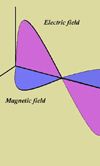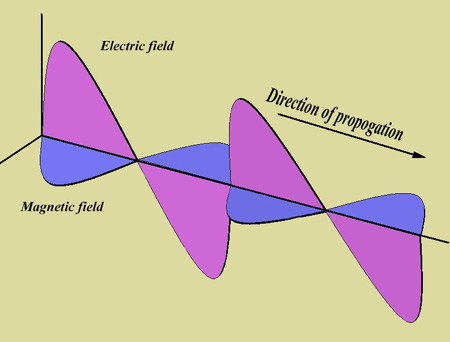The art of witty conversation?
 Pollution would seem to be an inevitable result of 21st-century life. Sulphur dioxide, nitrous oxides and PM10s are destroying the quality of our air; industrial and farm effluent together with excessive use of fertilisers are contaminating our rivers; and general domestic waste, used for landfill, are all visible sources of our times. However, one source of pollution - not quite so readily observed and not generally recognised as such, but increasing daily - is that of electromagnetic radiation.
Pollution would seem to be an inevitable result of 21st-century life. Sulphur dioxide, nitrous oxides and PM10s are destroying the quality of our air; industrial and farm effluent together with excessive use of fertilisers are contaminating our rivers; and general domestic waste, used for landfill, are all visible sources of our times. However, one source of pollution - not quite so readily observed and not generally recognised as such, but increasing daily - is that of electromagnetic radiation.
Apparently simple at first but increasingly complex when we start delving into it, electromagnetic radiation exhibits both wavelike and particulate properties as one of a transverse oscillating wave of electric as well as magnetic fields, and whose oscillations are at right angles to the direction of the energy transfer. These electric and magnetic components oscillate perpendicular to each other in phase and at right angles to the direction of travel.
But unlike all the other forms of pollution mentioned, not all electromagnetic radiation is undesirable. Light, for instance, is a perfect example, as are the radio waves that increasingly energise our communications networks, mobile phone telemetry systems and the like. No, the major concerns are over the forms of electromagnetic waves inadvertently produced and captured by our electronic systems, with sometimes devastating results. One such system historically at risk is the engine management when early systems could be corrupted by unwanted radio waves.
I remember one such incident about 30 years ago when a number of test vehicles undergoing mileage accumulation broke down on the same section of road within a short time of each other. Recovering them back to base, the engine was cranked and started immediately, giving no indication of a fault and running perfectly thereafter. It was only when the vehicles travelled down that certain section of road (which was close to a high-power radio mast) that the problem re-occurred. Eventually the problem was traced and demonstrated to all by flooding the engine bay of the car with high-frequency radio waves in a specially constructed chamber: the engine cut out and stalled every time the radio power was increased.
The problem with that particular installation, so I was informed, was that the control system wiring loom - which consisted of long, straight wires in the form of a loop and assembled around the engine bay - acted much as a radio aerial. Picking up the electromagnetic waves generated by the radio mast, as your car radio would, only served to confuse the early engine control electronics, and eventually caused the engine to stop.

Since then of course, much legislation has been introduced to ensure that these kinds of events no longer happen. Vehicles intended for the road have strict requirements for both electromagnetic susceptibility and, equally important, electromagnetic emission. Vehicles intended for the track or totally off-road may be exempt from on-road legislation, but with the advent of hybrid technology and more powerful kinetic energy recovery systems placing large amounts of electrical or electronic circuitry into confined spaces, the issue of interference, or 'crosstalk' - no, not the art of witty conversation - may be more relevant than ever.
High frequencies, large currents and the size of the loops of wiring therein, and the inevitable closeness of proximity of systems, make for the perfect breeding ground for electromagnetic interference. Once recognised, however, steps can be taken to counteract it - unlike of course the early practitioners of electronic engine control, who were more than just a little perplexed at the time.
Fig. 1 - Representation of an electromagnetic wave in 3D, showing a linearly polarised plane propagating from left to right
Written by John Coxon